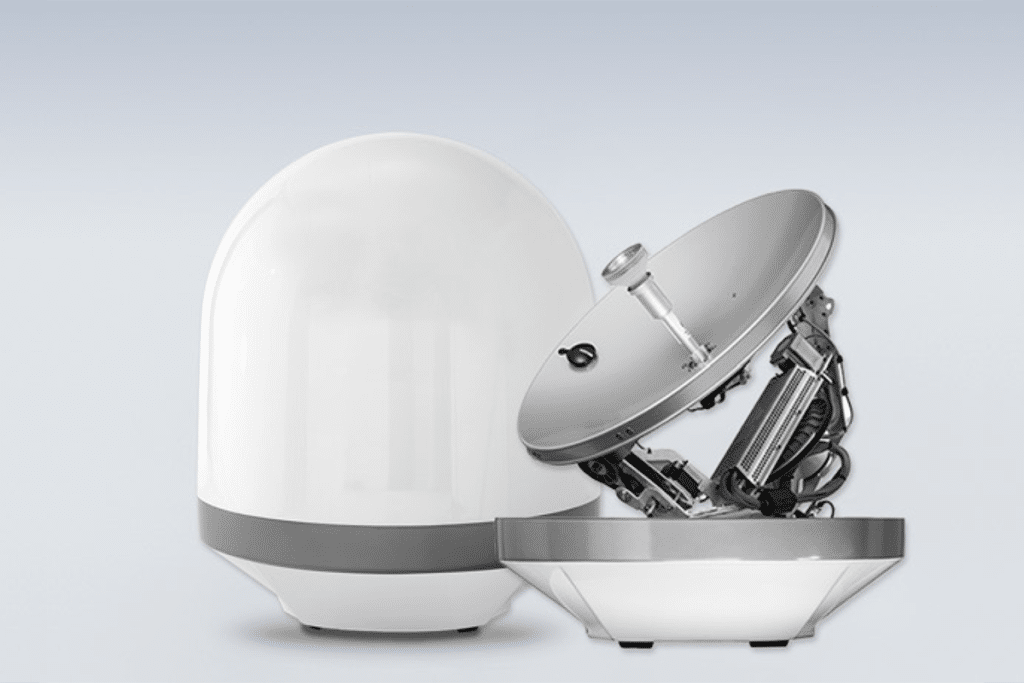Deep Dive: How 45cm Antennas Can Deliver Connectivity Fishing Vessels Need
In recent years, the commercial fishing sector has experienced an uptick in the adoption of Very Small Aperture Terminals (VSAT). With the number of VSAT equipped vessels is expecting a CAGR of 11% by 2030, this trend represents a major market shift. At one time, broadband connectivity at sea for smaller vessels seemed like a fanciful option. Today, it’s become a necessity.
To service this rapidly expanding market, Intelsat released a smaller antenna class for its FlexMaritime service, the 45cm antenna class. This affordable and easy-to-install terminal delivers the maritime connectivity fishing operations have been seeking.
In this blog post, we dive into why this market shift is occurring and how the new Intelsat maritime mobility solution enabled by the 45cm antenna is ideal for servicing the commercial fishing sector.
What’s Driving VSAT Adoption Amongst Fishing Vessels
Several years ago, reliable connectivity for fishing vessels at sea, especially smaller ones, was sparse. However, three big factors have contributed to the recent rise of VSAT adoption for reliable connectivity in this sector:
- Increasing regulations
- The influx of information and communication technology (ICT)
- A greater focus on crew welfare
Increasing Regulatory Requirements
Governments, ports and other international agencies continue to implement regulations aimed at reducing fuel pollution or improving the sustainability of fishing populations.
As these regulations proliferate, fishing vessels need the digital tools and applications necessary to adhere to them. This includes collecting and sharing accurate catch information in real time, which helps maintain regulatory compliance and sustainability goals.
Further, new regulations can and will often be implemented at a moment’s notice, to maintain regulatory compliance, fishing vessels need reliable connectivity to receive this information immediately.
Rapid Spread of Information and Communication Technology
The increase in ICT has revolutionized the fishing sector. Fleet owners and operators are leveraging this advanced technology for a host of purposes, including:
- Identifying valuable fishing resources
- Advanced planning and monitoring
- Capitalizing on market insights, such as electronic catch documentation and traceability systems price information
- Depending on applications for safety oversight requirements, spatial planning, co-management and social networking
Adopting these ICT capabilities helps fishing owners and operators remain competitive. However, to use these digital tools, fleets need access to reliable, high-speed connectivity.
A Greater Focus on Crew Welfare
Voyage lengths can vary drastically from one fishing vessel to the next, with some operating locally for a short period and others out in deep seas for months at a time. Despite the differences, the same needs exist for reliable connectivity, especially when it comes to crew welfare.
Fishing fleet owners and operators have become increasingly aware that their crews’ isolation and lack of communication with friends and family creates high turnover rates. This leads to more recruitment and training of new crew members, which can be a costly and time-consuming endeavor.
An affordable and easy-to-use communications solution lets crews keep in touch with friends and family on land. This greatly improves their general welfare and helps lower crew turnover rates.
How Intelsat’s New FlexMaritime 45cm Antenna Class Helps
Within the global fishing industry, smaller fishing boats, such as trawlers, comprise a sizable portion of fishing vessels. These boats typically lack the available space — and often the budget — to install a big, costly satellite terminal.
This makes the FlexMaritime 45cm antenna an ideal option for fishing vessels because the antennas are small enough to carry by hand. They’re also easy to install and connect to the Intelsat FlexMaritime network.
The FlexMaritime 45cm antenna solution provides global reliable, high-performance coverage. Intelsat high-throughput satellite (HTS) spot beams deliver bandwidth density for high-traffic routes, such as those commonly found close to shore where fishing vessels operate; meanwhile, layers of Intelsat wide-beam capacity reinforce coverage, delivering unrivaled network resiliency and redundancy.
Want to learn more about the new, small-yet-powerful 45cm antenna class on the Intelsat FlexMaritime network? Reach out to us today!





















